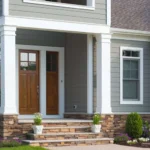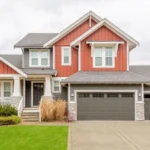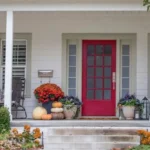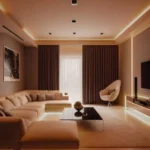Choosing the Right Paint Colors for Your Home’s Exterior is essential to enhancing curb appeal, protecting your property, and reflecting your personal style.
The right color palette can transform your home’s exterior, harmonizing with its architectural features and the surrounding environment.
Whether you’re refreshing a dated facade or selecting hues for a new build, understanding key factors like climate, lighting, and neighborhood trends is crucial.
This guide provides actionable tips, expert advice, and popular color combinations to help you make an informed decision.
With the right colors, your home can achieve a timeless and polished look that stands out while blending seamlessly into its setting.
Why Choosing the Right Exterior Paint Colors Matters?
The exterior of your home is the first thing people notice, and the right color scheme can create a welcoming and sophisticated impression. Here’s why choosing the right colors is important:
- Curb Appeal: A well-chosen color palette makes your home more attractive, increasing its market value.
- Architectural Harmony: Colors should align with your home’s architectural style to maintain authenticity.
- Durability: The right paint can protect your home from environmental damage like UV rays, rain, and wind.
- Personal Expression: Your choice of colors reflects your personality and style preferences.
Key Factors to Consider When Choosing Exterior Paint Colors
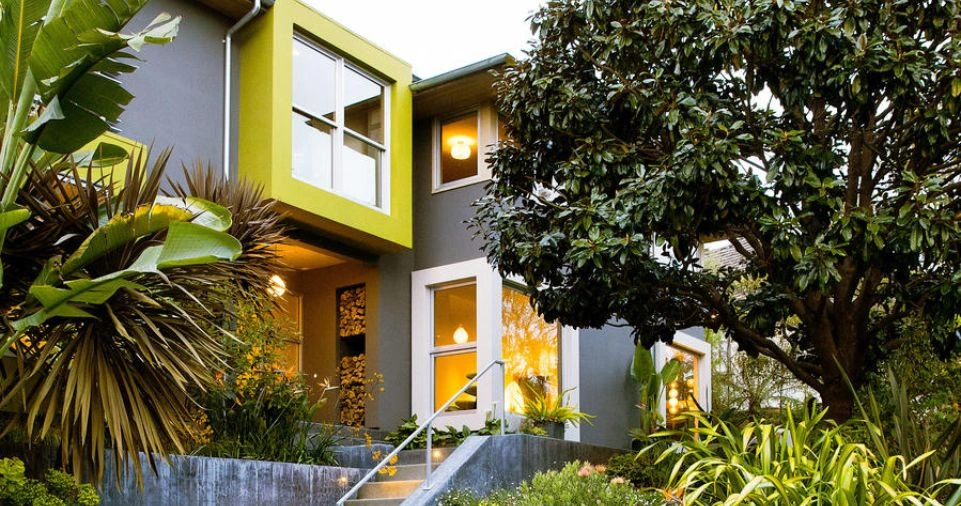
Architectural Style
Different architectural styles have traditional color palettes. For instance:
- Victorian homes: Often feature bold, multi-color schemes.
- Colonial homes: Typically lean toward classic whites or muted neutrals.
- Modern homes: Embrace minimalist palettes with monochromatic or contrasting tones.
Research your home’s architectural style to find suitable color options.
Neighborhood Aesthetics
- Consider the color schemes of neighboring homes. While it’s important to stand out, your home should still harmonize with the surrounding environment.
- Avoid clashing with homes nearby by choosing complementary or neutral tones.
Climate and Environment
Climate impacts how colors appear. For instance:
- Bright colors can fade quickly in sunny climates.
- Earthy tones and muted hues blend better in wooded or rural areas.
Reflective colors like white and light pastels work well in hot regions, while darker colors provide warmth in colder climates.
Lighting Conditions
- Colors appear differently under varying lighting conditions. Test your chosen shades in natural daylight to see how they look.
Roofing and Landscaping
- Consider the color of your roof and other fixed features like stone walls or brickwork.
- Ensure that your chosen paint colors complement these elements.
- Take your landscaping into account; vibrant flowers or green foliage can influence your color choices.
ALSO READ: How to Boost Your Home’s Curb Appeal with Easy Exterior Updates?
Popular Exterior Paint Color Combinations
Here are some trending exterior color combinations to inspire your selection:
| Primary Color | Accent Color | Trim Color | Best For |
|---|---|---|---|
| White | Black | Warm Grey | Modern Farmhouses |
| Beige | Navy Blue | White | Coastal Homes |
| Light Grey | Dark Grey | White | Minimalist or Contemporary |
| Olive Green | Cream | Taupe | Rustic or Cottage-Style Homes |
| Charcoal | Burgundy | Soft Grey | Urban or Industrial Designs |
Tips for Selecting the Perfect Color Palette
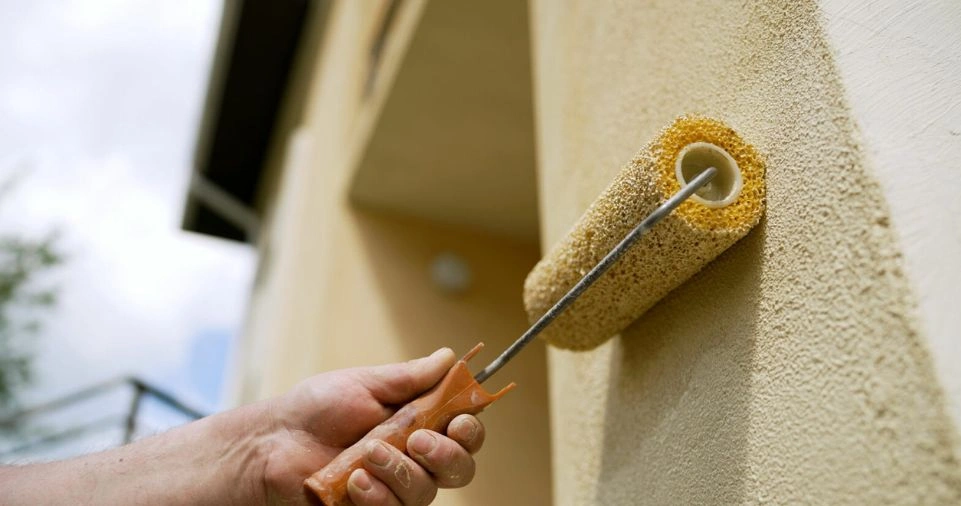
Start with a Fixed Feature
- Identify a fixed element of your home’s exterior, like the roof or brickwork, and choose colors that complement it.
Use the Rule of Three
A well-balanced exterior palette typically consists of three main colors:
- Primary color: Dominant color covering most of the home.
- Accent color: Used on doors, shutters, or other focal points.
- Trim color: Highlights edges and frames.
Test Paint Samples
- Apply test patches of your selected colors on different parts of the exterior.
- Observe them at various times of the day to see how light affects the appearance.
Embrace Undertones
- Understand the undertones of your paint colors. For example, white can have warm, cool, or neutral undertones that influence its overall effect.
Balance Bold Choices
- If you opt for a bold color, balance it with neutral accents to avoid overwhelming the design.
Common Mistakes to Avoid
- Ignoring the Roof Color: Your roof is a significant part of your home’s exterior. Ensure your paint colors coordinate well with it.
- Choosing Colors Online: Colors can look drastically different in person. Always test physical samples.
- Overlooking Surroundings: Your home should harmonize with the natural and architectural environment, not clash with it.
- Underestimating Maintenance: Light-colored exteriors require frequent cleaning, while darker colors may fade quickly under strong sunlight.
Exploring Finishes and Textures
The type of finish you choose impacts the final look and durability of your exterior paint. Here’s a breakdown of common finishes:
| Finish Type | Characteristics | Best Used For |
|---|---|---|
| Matte | Non-reflective, hides imperfections | Older homes, textured walls |
| Satin | Slight sheen, easy to clean | Siding, larger surfaces |
| Semi-Gloss | Reflective, durable, highlights architectural details | Trim, doors, shutters |
| Gloss | Highly reflective, very durable | Accents, metal fixtures |
Innovative Tools for Choosing Colors
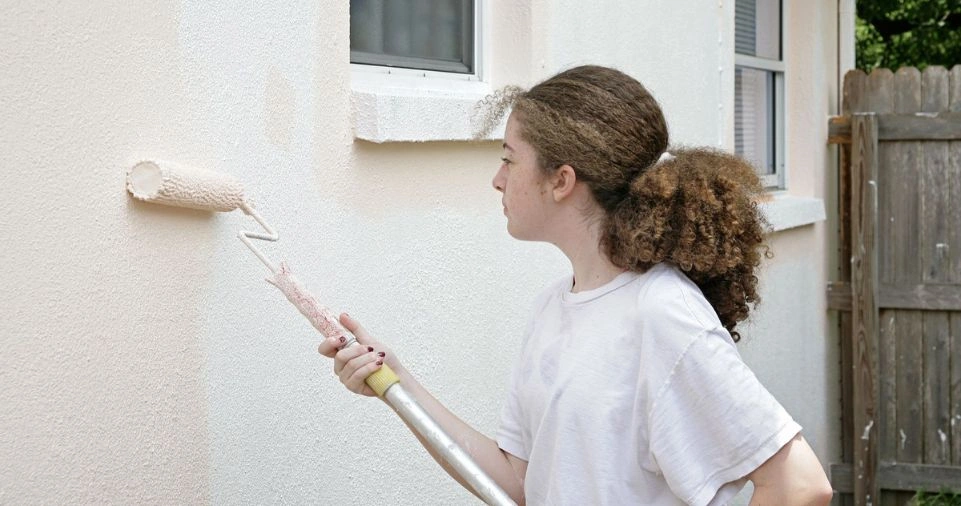
Color Visualizer Apps
Apps like Sherwin-Williams’ ColorSnap and Benjamin Moore’s Personal Color Viewer allow you to upload photos of your home and try different color combinations digitally.
Professional Consultations
Hiring a color consultant can provide expert guidance tailored to your home’s specific needs.
Sustainability and Eco-Friendly Paint Options
Eco-friendly paints are an excellent choice for environmentally conscious homeowners. These paints are low in volatile organic compounds (VOCs), reducing air pollution and health risks.
| Feature | Eco-Friendly Paints | Traditional Paints |
|---|---|---|
| VOC Levels | Low to None | Moderate to High |
| Durability | Comparable to traditional paints | High |
| Cost | Slightly higher | Moderate |
ALSO READ: How to Select Furniture That Complements Your Home’s Interior Design?
Conclusion
Choosing the right paint colors for your home’s exterior requires careful consideration of architectural style, climate, neighborhood aesthetics, and personal preferences.
By following the tips and strategies outlined in this guide, you can create a color palette that enhances your home’s beauty and value.
Remember to test your chosen colors, embrace eco-friendly options, and consider professional input to ensure a stunning result.
By investing time and thought into your exterior paint selection, you can transform your home into a masterpiece that reflects your unique style and stands the test of time.


